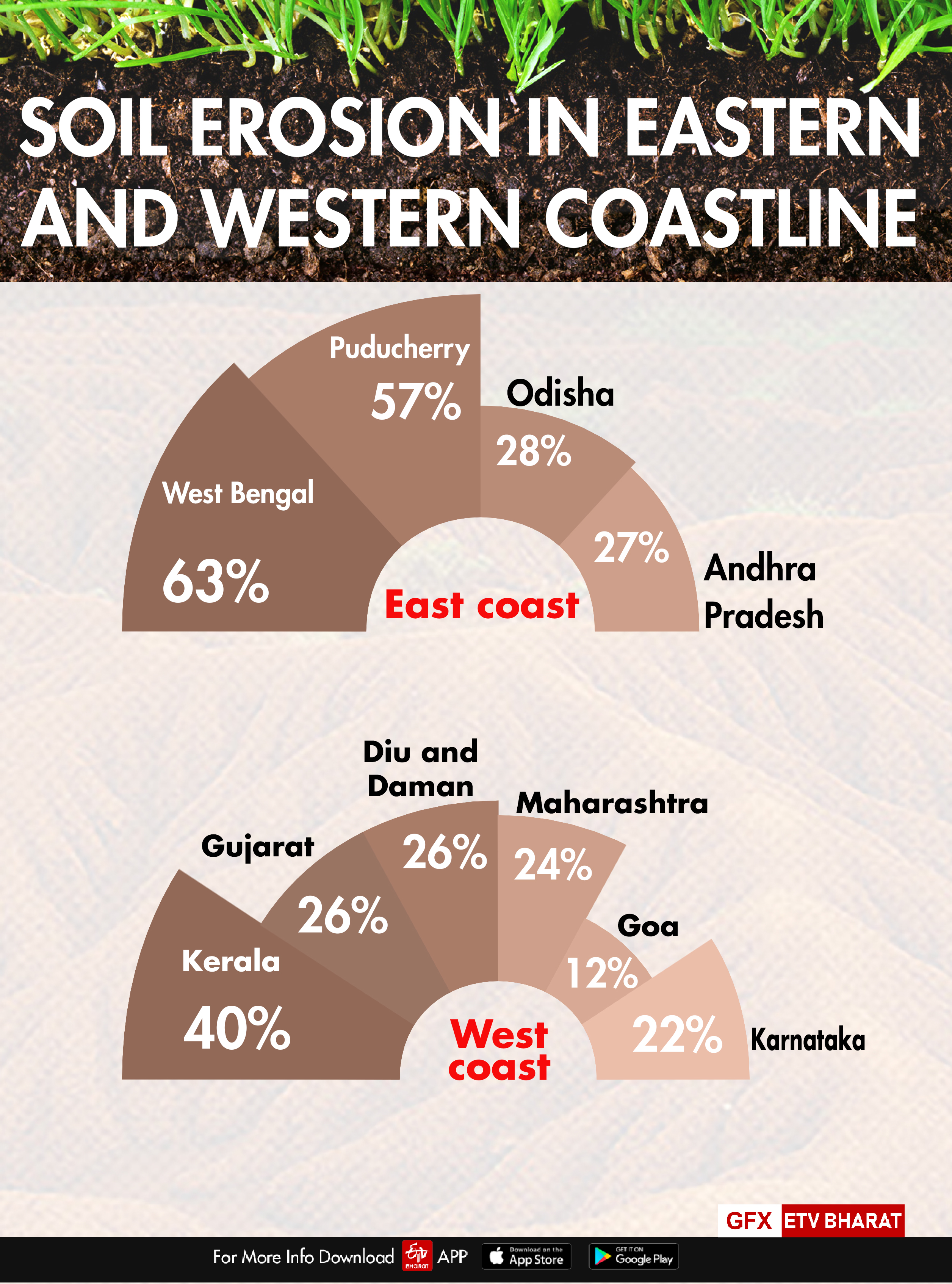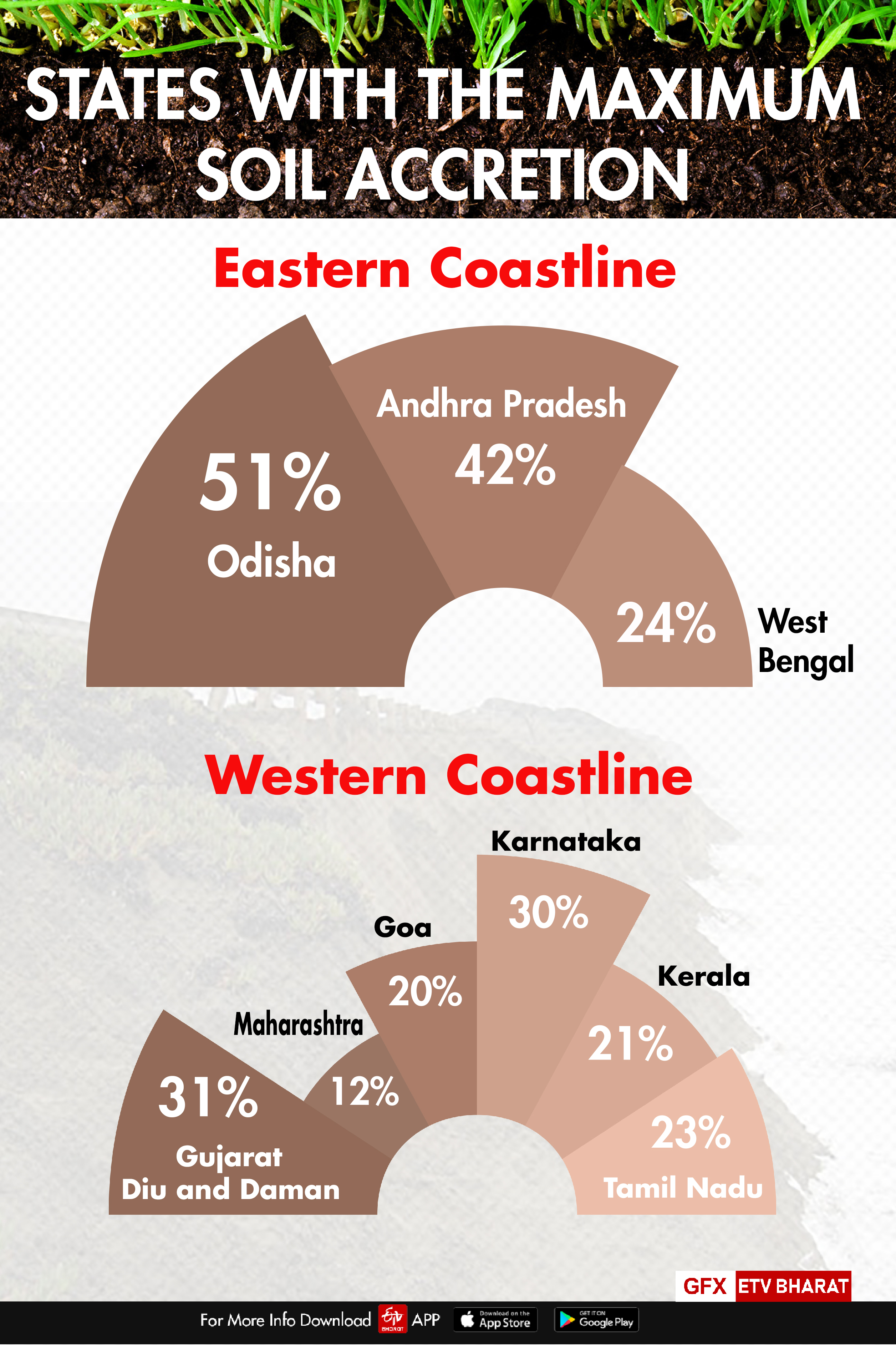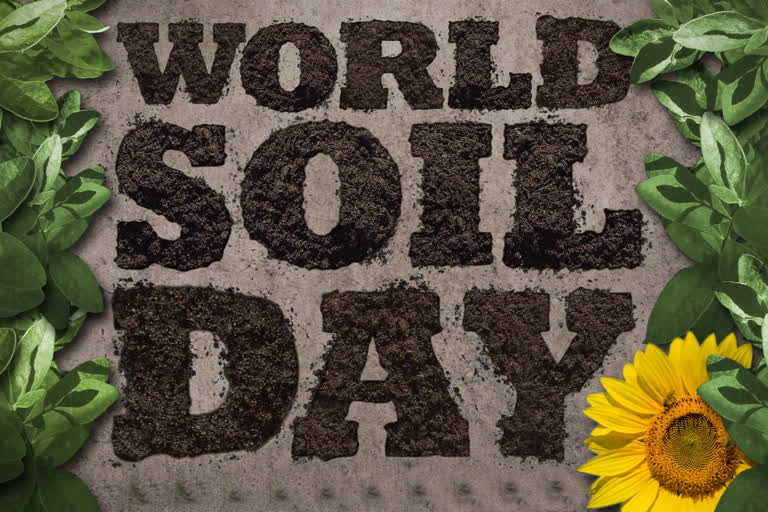Hyderabad: World Soil Day is celebrated on the 5th of December every year across the world by the Food and Agriculture Organization (FAO) of the United Nations.
The event aims to raise awareness of the importance of soil quality for human well-being, food security and ecosystems, and events are held at the UN FAO offices and through community-based events.
Soil's protection is of utmost importance to ensure the future of food. But soil erosion is putting our productive land in danger by removing the highly fertile topsoil.
Soil erosion – the number one threat to the Planet’s soils - literally washes our topsoil away, down streams, rivers, into lakes and blows soil particles across oceans.
Without soil, mankind cannot imagine life for a single moment because it is soil which provides us with food, shelter and cloth directly or indirectly, which are the three vital basic needs of human life.
Around 95% of our food is directly or indirectly produced on our soils. It also supports foundations of buildings, roads and communication infrastructures.
While it occurs naturally everywhere, unsustainable human activities significantly increase natural rates.
World Soil Day 2019: Theme
The theme of this year's World Soil Day is ‘Stop soil erosion, Save our future’.
The goal is to raise awareness on the importance of sustaining healthy ecosystems and human well-being by addressing the increasing challenges in soil management and to raise the profile of healthy soil by encouraging governments, organizations, communities and individuals around the world to engage in proactively improving soil health.
Do you know why is 5 December chosen as World Soil Day?
Because this date corresponds to the birthday of the late H.M. King Bhumibol Adulyadej, King of Thailand, who officially sanctioned the event.
In 2016, this day was officially recognized in memory and with respect for this beloved monarch who passed away in October 2016 after seven decades as head of state.
An International Day to celebrate Soil was recommended by the International Union of Soil Sciences (IUSS) in 2002.
Under the leadership of the Kingdom of Thailand and within the framework of the Global Soil Partnership, FAO has supported the formal establishment of WSD as a global awareness-raising platform.
The FAO Conference unanimously endorsed World Soil Day in June 2013 and requested its official adoption at the 68th UN General Assembly.
In December 2013 the UN General Assembly responded by designating 5 December 2014 as the first official World Soil Day.
Soil Erosion Washes Away $8 Billion Annually
Researchers from the European Union Joint Research Centre coupled two models, RUSLE and MAGNET, to estimate economic losses from soil erosion by water. They found that $8 billion is lost annually from global GDP.
Worldwide, food production is reduced by 33.7 million tons of food.
Countries that have both the highest erosion rates as well as a large proportion of agricultural land are especially vulnerable.
The majority of Caribbean countries, Brazil, Central African countries, and parts of Southeast Asia are experiencing severe erosion on more than 70% of their arable land.

In contrast, Australia, Canada, Saharan countries, Russia, and most of the European Union are only losing 3% of their arable land to severe erosion.
To put this in perspective, on average, 24% of arable land globally is undergoing severe erosion.
Soil Erosion: Causes, Extent and Management in India
The research on Indian coastlines was carried out by the National Centre for Coastal Research, an institute under the Ministry of Earth Sciences 2018.
A staggering one-third of almost the entire Indian coastline was lost due to soil erosion in the last 26 years.
However, surprisingly, almost an equal area of land has been added due to new deposits of sediment, a government report said.
India has a total coastline of 7,517 kilometres. Of this, 6,031 kilometres were surveyed (excluding creeks) and 33 per cent of it was found to be eroded; West Bengal recorded the highest erosion losing 99 sq. km of land in the past 26 years. Moreover, 29 per cent of the coastline also saw a gain in soil or land accretion.
The erosion was more on the eastern coast beside the Bay of Bengal rather than on the Western coast beside the calmer Arabian Sea.
The report says that 2,156.43 kilometres of the country's surveyed coastline faced erosion, while 1,941.24 kilometres saw accretion onshore.

Some studies indicate that half of India’s geographical area is “degraded”, and suffers from soil erosion. On average, the erosion rate led to an annual soil loss of over five billion tonnes. Twenty-nine per cent of this loss is permanent — it flows into the seas and oceans — and 61% is merely transferred from one place to another.
According to a study, it is revealed that “soil erosion due to water resulted in an annual crop production loss of 13.4 million tonnes in cereals, oilseeds, and pulse crops, equivalent to $162 billion”.
Causes for the erosion:
Soil erosion may be by water, wind or tillage. It consists of three distinct actions — soil detachment, movement and deposition.
Detachment is the process of detachment of topsoil from the rest of the ground, movement process means the topsoil is relocated to another area and deposition is a processor stage where the topsoil ends up after this process.
Major causes of soil erosion are rainfall, flooding by rivers and streams, high wind, overgrazing, overstocking and tillage practices, deforestation, reduced vegetation cover, urbanization and mass movements and soil structure/composition.
In eight Indian states, overgrazing and deforestation have led to over 20% wastelands. In the case of overgrazing, the soil loss is 5-41 times the normal at the mesoscale, and 3-18 times greater at the macro-scale.
A combination of industrialisation, urbanisation, and infrastructure development takes away considerable areas.
Mining is a major cause, especially illegal mining, now that open cast mining is under control.
Natural causes of land degradation include earthquakes, tsunamis, droughts, avalanches, landslides, volcanic eruptions, floods, tornadoes, and wildfires.
Land shortage and land fragmentation, coupled with poverty “limit the use of green manuring or soil conservation structures”.
Population increase, both of humans and livestock, is an obvious reason for soil erosion.
Certain agriculture practices such as intensive farming, low use of fertilisers, excessive tillage and use of heavy machinery, burning of crop residue, poor irrigation, poor crop rotations, and soil pollution contribute to the extensive degradation of the land.
To prevent soil erosion government introduced a scheme in 2015, 'Soil Health Card Scheme'. This scheme aimed to help farmers to improve productivity through judicious use of inputs.
According to the Ministry of Agriculture and Farmers' Welfare, over 15 crore Soil Health Cards have been distributed to the farmers across the country.
The card provides information to the farmers on fertility status of their soil and enables them to apply soil health card based recommended dosages of fertilizers including micro-nutrients, bio-fertilizers, manures as well as soil ameliorates.
It is helpful in checking the declining fertility of agriculture land and improve the fertility of soils to increase productivity besides enhancing farmers income.
So concerted, coordinated and combined fruitful effort is very much essential with the active participation of all stockholders and the masses if we really want to stop or minimize soil erosion and save our future by ensuring sustainable food security.
Control of Soil Pollution
The following steps have been suggested to control soil pollution. To help prevent soil erosion. In general, we would need less fertilizer and fewer pesticides if we could all adopt the three R’s: Reduce, Reuse, and Recycle. This would give us less solid waste.
Reducing chemical fertilizer and pesticide use:
Applying bio-fertilizers and manures can reduce chemical fertilizer and pesticide use. Biological methods of pest control can also reduce the use of pesticides and thereby minimize soil pollution.
Reusing of materials:
Materials such as glass containers, plastic bags, paper, cloth etc. can be reused at domestic levels rather than being disposed, reducing solid waste pollution.
Recycling and recovery of materials:
This is a reasonable solution for reducing soil pollution. Materials such as paper, some kinds of plastics and glass can and are being recycled. This decreases the volume of refuse and helps in the conservation of natural resources. For example, recovery of one tonne of paper can save 17 trees.



